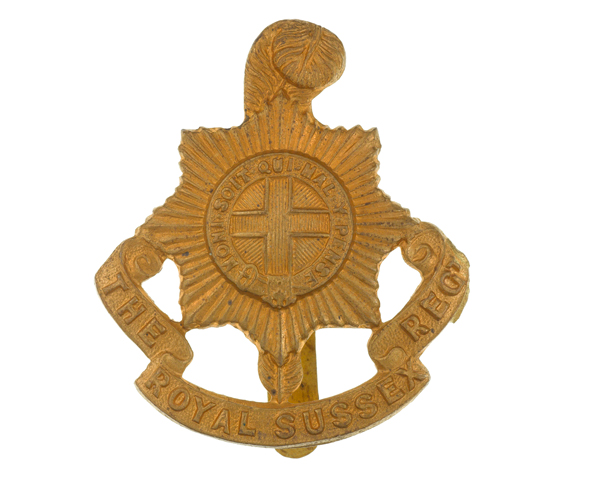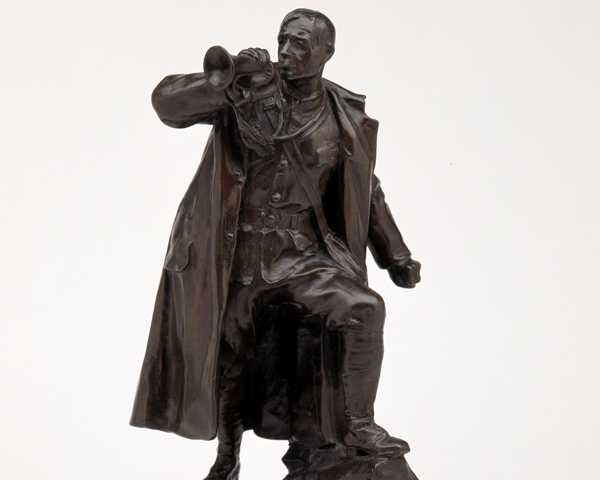Origins
Sussex’s county regiment was established in 1881 by amalgamating the 35th (Royal Sussex) Regiment and the 107th Regiment of Foot (Bengal Light Infantry). The 35th was the senior of the two and had been linked with Sussex since 1805. It became the 1st Battalion, while the 107th was made the 2nd Battalion.
1st Battalion fought against Arabi Pasha in Egypt in 1822. It then took part in the First Sudan War (1884-85), fighting at Abu Klea (1885). 2nd Battalion spent the 1880s in Ireland, Malta, Egypt and India, participating in the 1888 Hazara Expedition.
Over the next two decades, both battalions served on garrison duties in India, Britain and Ireland. 1st Battalion also joined the Boer War (1899-1902) in 1900, serving in Cape Colony.
First World War
1st Battalion remained in India and 2nd Battalion on the Western Front throughout the First World War (1914-18).
The regiment also formed 19 Territorial and New Army battalions during the conflict. These served in Salonika, Palestine, Mesopotamia, India and Russia. Over 6,800 men of the regiment were killed in the war.
In 1919-20, the Territorial 2/6th Battalion fought in the Third Afghan War (1919) and the revolt in Waziristan. The inter-war years also saw the two regular battalions undertake garrison duties in Germany, the West Indies, Northern Ireland, Britain, Malta, Singapore, India, Palestine and Egypt.
Second World War
1st Battalion remained in Egypt for the first year of the Second World War (1939-45), before fighting in Abyssinia (1940-41), Libya (1941-2) and Tunisia (1942-43). It spent 1943 alternating between Egypt and Palestine, prior to landing in Italy in December and fighting at Monte Cassino (1944). In November 1944, it moved to Greece following the German retreat.
2nd Battalion deployed to France in April 1940 and suffered heavily in its retreat to Dunkirk. It was two years before it returned to action, fighting at Alam Halfa (1942) and El Alamein (1942) in North Africa.
In 1943, 2nd Battalion (along with volunteers from the Territorial 4th and 5th Battalions) was converted into 10th Battalion, The Parachute Regiment. This fought at Arnhem in 1944. Meanwhile, a new 2nd Battalion had been formed to join the invasion of Persia (now Iran) and Iraq in 1943.
Altogether, 14 battalions were raised during the conflict. Although most were used for home defence or as training units, the Territorial 6th and 7th fought in France in 1940, and the 9th Battalion in Burma during 1943-45.
Post-war
2nd Battalion remained in Persia until 1946. Two years later, it was amalgamated with 1st Battalion, which was in Palestine at the time.
In 1951, the regiment moved to Egypt. Then, in August 1956, it was stationed in South Korea. It spent most of its remaining years in Gibraltar, Britain, Malta and West Germany, although it sent a detachment to Aden in April 1965.
Legacy
In 1966, it merged with The Queen’s Royal Surrey Regiment, The Queen’s Own Buffs, The Royal Kent Regiment and The Middlesex Regiment (Duke of Cambridge's Own) to form The Queen’s Regiment.
Regimental museums
The National Army Museum works with a network of Regimental and Corps Museums across the UK to help preserve and share the history and traditions of the Army and its soldiers.
Discover more about The Royal Sussex Regiment by visiting West Sussex Record Office.













